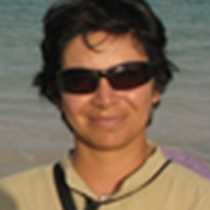Floreana Island
Today we arrived at the first island that was colonized by Ecuador in 1832. We started with a pre-breakfast landing on Punta Cormorant; there we found a lonely flamingo looking for brine shrimp in the brackish water lagoon. We continued to a gorgeous white sandy beach, and there we saw a few fresh sea turtle tracks. This beach is locally known as La Picona, meaning, “Stinging Beach.” This name refers to the presence of stingrays and even though we were not able to find any, they are often here in large numbers.
After this early walk, we went back on board and sailed towards Champion Islet. There went looking for the rare Floreana mockingbird. This morning we were very lucky and found it. In addition to the mockingbirds we also saw blue-footed boobies, Nazca boobies, brown pelicans, Galápagos shearwaters, red-billed tropicbirds and several juvenile Galápagos sea lions. Later on we returned to Champion Islet to snorkel and saw several schools of fish, and as we sat on the Zodiac with our feet in the water, some young sea lions came very close. One was caught on camera as it was curiously observing the Zodiac and one of our guest’s feet. Wildlife in Galápagos tends to be very inquisitive and tends to approach us instead of shying away. Humans here become part of their world as we treat nature with respect.
The afternoon we had different options, some of our guests went kayaking, others enjoyed a relaxing moment on the beach of Post Office Bay. Later on we all went to look for postcards and letters inside an old wooden barrel, and just as the whalers did in the 1800s, we picked up some mail to hand deliver back home, and we also left some of our own postcards; one day somebody will deliver those just to continue with this age-old tradition.




